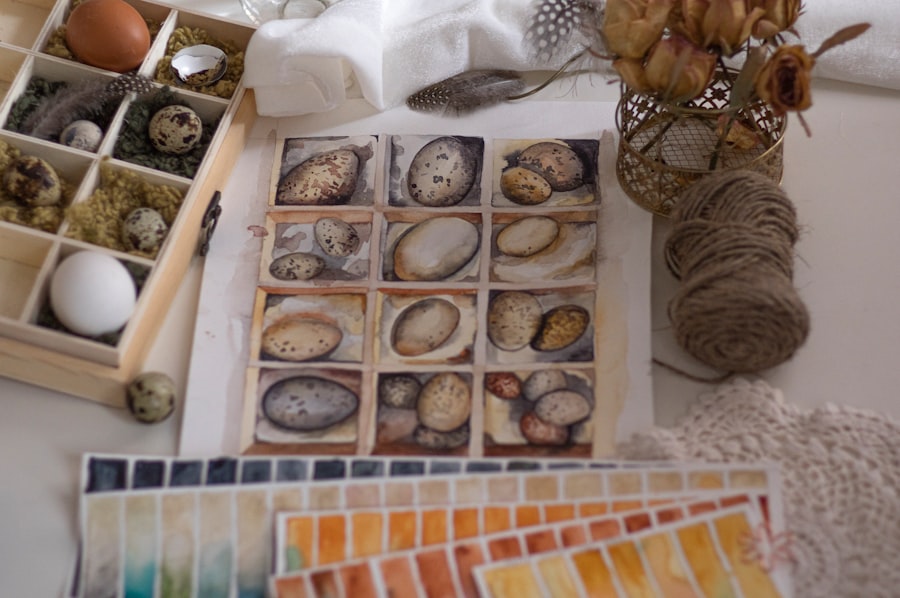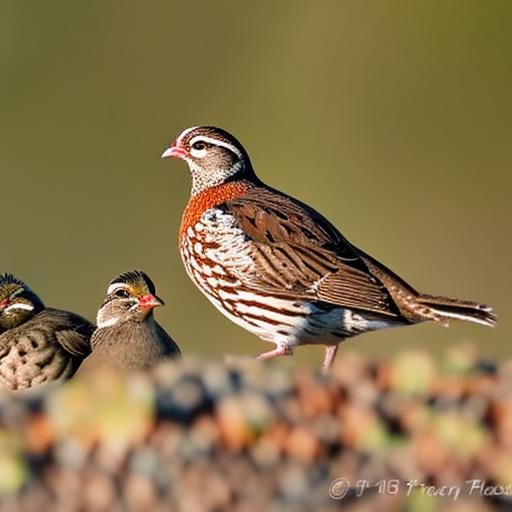Keeping quail and chickens together can be a rewarding experience for poultry enthusiasts. Both quail and chickens are popular choices for backyard farming, and when kept together, they can complement each other in various ways. Quail are known for their small size, gentle nature, and ability to lay eggs prolifically, while chickens are larger and provide a steady supply of eggs and meat. By keeping them together, you can create a diverse and productive flock that offers a range of benefits. However, it’s important to understand the specific requirements of each species and how to manage their interactions to ensure a harmonious coexistence.
Quail and chickens have different housing, feeding, and social needs, so it’s essential to carefully plan and prepare for keeping them together. In this article, we will explore the housing requirements for quail and chickens, their feeding and nutrition needs, health considerations, managing social dynamics, and the benefits of keeping them together. By understanding these aspects, you can create a thriving environment for both quail and chickens on your farm or in your backyard.
Key Takeaways
- Keeping quail and chickens together can be a rewarding and efficient way to raise poultry.
- Both quail and chickens have similar housing requirements, but quail need smaller spaces and different bedding material.
- Quail and chickens have different nutritional needs, so it’s important to provide separate feeders and waterers for each species.
- Health considerations include monitoring for diseases that can affect both quail and chickens, such as coccidiosis.
- Managing social dynamics between quail and chickens involves providing enough space and hiding spots for quail to avoid aggression from chickens.
Housing Requirements for Quail and Chickens
When keeping quail and chickens together, it’s crucial to provide suitable housing that meets the needs of both species. Quail are ground-dwelling birds that prefer low roosting areas, while chickens are more comfortable with elevated roosts. Therefore, the housing should include both ground-level shelters for quail and raised roosts for chickens. Additionally, quail require nesting boxes with soft bedding to lay their eggs, while chickens need larger nesting areas to accommodate their size.
The housing should also provide adequate ventilation, natural light, and protection from predators. It’s important to ensure that the space is well-ventilated to prevent the buildup of ammonia from droppings, which can be harmful to both quail and chickens. Natural light is essential for the well-being of both species, so the housing should have windows or openings that allow sunlight to enter. Furthermore, the housing should be secure to protect the birds from predators such as foxes, raccoons, and birds of prey. By providing suitable housing that meets the specific needs of quail and chickens, you can create a safe and comfortable environment for both species to thrive.
Feeding and Nutrition for Quail and Chickens
Quail and chickens have different dietary requirements, so it’s important to provide a balanced diet that meets the nutritional needs of both species. Quail are omnivorous birds that require a high-protein diet to support their egg-laying and growth. Their diet should include a combination of commercial quail feed, seeds, grains, insects, and green leafy vegetables. On the other hand, chickens are also omnivores but have a broader diet that includes layer feed, grains, fruits, vegetables, and occasional treats such as mealworms or kitchen scraps.
When keeping quail and chickens together, it’s important to ensure that each species has access to their specific feed without competition or aggression. Providing separate feeding areas for quail and chickens can help prevent conflicts and ensure that each bird receives the appropriate nutrition. Additionally, offering grit or small stones to both quail and chickens can aid in digestion by helping them grind their food in their gizzards. By understanding the dietary needs of quail and chickens and providing a balanced diet, you can promote their overall health and productivity.
Health Considerations for Keeping Quail and Chickens Together
When keeping quail and chickens together, it’s essential to be proactive in maintaining their health and preventing the spread of diseases. Both quail and chickens are susceptible to various illnesses and parasites, so regular monitoring and preventive measures are crucial. It’s important to keep the housing clean and dry to prevent the buildup of bacteria and parasites that can affect the health of both species. Regularly removing droppings, providing clean bedding, and disinfecting the housing can help minimize the risk of disease transmission.
Additionally, it’s important to observe the behavior and condition of both quail and chickens to detect any signs of illness or distress. Common health issues in poultry include respiratory infections, mites, lice, and internal parasites. By conducting regular health checks and seeking veterinary care when necessary, you can ensure the well-being of your quail and chickens. It’s also important to quarantine new birds before introducing them to an existing flock to prevent the spread of diseases. By being proactive in maintaining the health of quail and chickens, you can create a thriving environment for both species.
Managing Social Dynamics between Quail and Chickens
Quail and chickens have different social dynamics and hierarchies, so it’s important to manage their interactions to prevent aggression or stress. Chickens are known for their pecking order, where dominant individuals establish a hierarchy within the flock. Quail also have a social structure but are generally more peaceful and less aggressive than chickens. When introducing quail to an existing chicken flock or vice versa, it’s important to monitor their interactions closely to ensure that no bullying or aggression occurs.
Providing ample space, multiple feeding areas, and hiding spots can help minimize competition and reduce the risk of conflict between quail and chickens. Additionally, introducing new birds gradually and during the evening can help reduce stress and aggression as they acclimate to each other. It’s also important to provide enrichment such as perches, dust baths, and toys to keep both quail and chickens occupied and reduce boredom-related aggression. By managing the social dynamics between quail and chickens, you can create a harmonious environment where both species can coexist peacefully.
Benefits of Keeping Quail and Chickens Together

Keeping quail and chickens together offers a range of benefits for poultry enthusiasts. One of the main advantages is the diversity of products that both species provide. Quail are prolific layers that produce small eggs with a rich flavor, while chickens offer larger eggs as well as meat. By keeping them together, you can enjoy a variety of eggs for culinary purposes as well as meat if desired. Additionally, both quail eggs and chicken eggs are in demand for their unique flavors and nutritional profiles.
Another benefit of keeping quail and chickens together is their complementary foraging behaviors. Quail are ground-dwelling birds that scratch and peck for insects and seeds, while chickens are more adept at scratching through leaf litter for food. By allowing them to forage together in a supervised environment, you can promote natural behaviors and reduce reliance on commercial feed. This can also help improve soil health by aerating the ground and controlling pests naturally.
Furthermore, keeping quail and chickens together can provide educational opportunities for children or enthusiasts interested in poultry farming. Observing the behaviors, interactions, and life cycles of both species can offer valuable insights into animal husbandry and natural processes. By experiencing firsthand the care and management of quail and chickens, individuals can develop a deeper appreciation for these birds and gain practical skills in raising poultry.
Conclusion and Final Tips for Keeping Quail and Chickens Together
In conclusion, keeping quail and chickens together can be a rewarding experience that offers a range of benefits for poultry enthusiasts. By understanding their specific housing requirements, feeding needs, health considerations, social dynamics, and benefits of coexistence, you can create a thriving environment for both species. It’s important to provide suitable housing that meets the needs of both quail and chickens while ensuring adequate ventilation, natural light, and protection from predators.
Feeding a balanced diet that meets the nutritional needs of both species is crucial for promoting their overall health and productivity. Regular monitoring of their health, preventive measures against diseases, and managing their social dynamics can help create a harmonious environment where quail and chickens can coexist peacefully. The benefits of keeping them together include a diverse range of products, complementary foraging behaviors, educational opportunities, as well as the joy of observing their interactions.
In conclusion, keeping quail and chickens together requires careful planning, attention to detail, and proactive management to ensure the well-being of both species. By creating a harmonious environment that meets their specific needs, you can enjoy the rewards of raising diverse poultry on your farm or in your backyard.
If you’re considering keeping quail and chickens together, it’s important to provide a suitable coop and nesting boxes for both species. Poultry Wizard offers a helpful article on creating the perfect chicken coop and nest box setup, which can be found here. This resource can provide valuable insights into designing a coop that meets the needs of both quail and chickens, ensuring their comfort and well-being.
FAQs
Can quail and chickens be kept together?
Yes, quail and chickens can be kept together in the same coop or enclosure as long as certain considerations are taken into account.
What are the considerations for keeping quail and chickens together?
It is important to provide enough space for both quail and chickens to avoid overcrowding. Additionally, quail and chickens have different dietary needs, so it is important to provide appropriate feed for each species.
Do quail and chickens get along?
In general, quail and chickens can get along well if they are introduced to each other at a young age and have enough space to coexist peacefully. However, it is important to monitor their interactions to ensure that there is no aggression or bullying.
What are the benefits of keeping quail and chickens together?
Keeping quail and chickens together can provide a diverse and dynamic flock, as well as potential benefits for pest control and foraging. Additionally, it can be more efficient to manage a mixed flock compared to separate flocks.
Are there any potential drawbacks to keeping quail and chickens together?
One potential drawback is that quail and chickens have different space and dietary requirements, so it may require more careful management to ensure that both species are thriving. Additionally, there is a risk of disease transmission between the two species.
Meet Walter, the feathered-friend fanatic of Florida! Nestled in the sunshine state, Walter struts through life with his feathered companions, clucking his way to happiness. With a coop that’s fancier than a five-star hotel, he’s the Don Juan of the chicken world. When he’s not teaching his hens to do the cha-cha, you’ll find him in a heated debate with his prized rooster, Sir Clucks-a-Lot. Walter’s poultry passion is no yolk; he’s the sunny-side-up guy you never knew you needed in your flock of friends!







